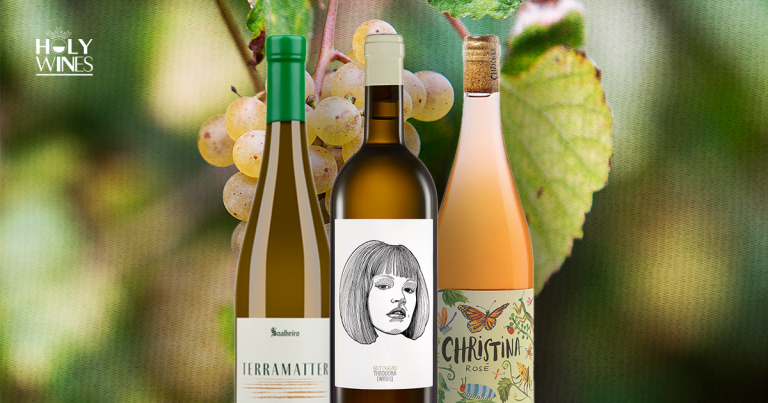
Natural wine is a term used to describe wines that are made with minimal intervention both in the vineyard and the cellar. The concept revolves around producing wine in a manner that allows the grapes to express themselves fully, often using organic or biodynamic farming practices and avoiding additives and technological manipulation during winemaking.
Natural winemakers reject many modern interventions in favour of artisan practices from the past. The overall aim is ‘nothing added, nothing removed’. While there is no agreed definition for natural wine, in practice it usually refers to wine made with the fewest possible manipulations, fermentation by ambient yeasts and an absolute minimum of added SO2 (typically only at bottling) or with no added SO2.
Natural wine can be made from conventionally or sustainably grown grapes, though many natural winemakers would argue that organic or biodynamic grapes should be used.
Perhaps the most important aspect is that there is no certifying body for natural winemaking; therefore, any winery can claim that any of their wines are natural. I’m of the opinion that a natural wine needs to at least be made with organic grapes. Having said that regulations between Unites States & the European Union differ. So the same wine can be labelled organic in Europe but not in the United States.
Organic Viticulture
Organic viticulture seeks to improve the soil of the vineyard and the range of microbes and animals, such as earthworms, within it and thereby increase the health and disease-resistance of the vine. It rejects the use of man-made fertilisers, fungicides, herbicides and pesticides. Some key features are:
- The application of compost, which breaks down in the soil providing a slow release of nutrients for vines, improves the structure and increases the biomass in the soil.
2. Cover crops are also often used to prevent erosion of the soil and to contribute to the improvement of the life of the soil. This can be through ploughing them in or by improving biodiversity.
3. Natural fertilisers may also be used. The idea is to restore the natural balance of the vineyard.
4. The monoculture of vineyards can be reduced by growing cover crops, planting hedges and establishing ‘islands’ of biodiversity.
Biodynamic Viticulture
Biodynamic viticulture is based on the work of Rudolf Steiner and Maria Thun. It includes organic practices, but also incorporates philosophy and cosmology. The vineyard soil is seen as part of a connected system with the planet Earth, the air and other planets. Practitioners adapt their grape growing practices to coincide with the cycles of the planets, moon and stars.
For example, when the moon is ascending, a summer mood is evoked, therefore this is a good time to take cuttings for grafting, but pruning should be avoided. When the moon is descending, a winter mood is evoked and roots are favoured: this is the best time to plant vines or to prune. From this basis, Maria Thun, followed by others, further developed calendars to advise grape growers on root, leaf, flower or fruit days, which indicate the best days for certain activities.
Homeopathic remedies called ‘preparations’ are used to fertilise the soil, treat diseases and ward off pests.
Natural Wine Practices
Minimal Intervention: In the cellar, minimal intervention is key. Natural winemakers typically avoid adding or removing anything from the wine during the winemaking process. This includes refraining from using cultured yeast for fermentation, opting for wild yeast present on the grapes or in the cellar instead. They also avoid additives such as sulfites, which are commonly used as preservatives in conventional winemaking.
No Filtration or Fining: Natural wines are often unfiltered and unfined. This means that the wine may appear cloudy or have sediment, as it has not been clarified using traditional methods. However, this is considered by proponents to enhance the wine’s authenticity and expression of terroir.
Terroir Expression: Natural winemakers often prioritize the expression of terroir, which refers to the unique characteristics of a vineyard’s location, including its soil, climate, and topography. By minimizing intervention, natural winemakers believe they can better capture and showcase these distinctive qualities in the wine.
Variety and Diversity: As mentioned earlier, natural wine production is not governed by any rules or regulations, allowing for greater experimentation and diversity in styles and flavors. As a result, natural wines can vary widely in taste, aroma, and appearance, reflecting the individuality of the winemaker and the vineyard.
Last but not least, opinions on natural wine vary widely within the wine community, with some enthusiasts praising its purity and authenticity, while others criticize its lack of consistency and potential for faults. There’s only one way to find out and make your opinion, try as many as you can 🙂
